We recommend Nextiva as the best VoIP phone system for most businesses due to its call quality, flexibility, and reliability. Save up to 28% when you sign up today.
Every business needs a phone solution. Historically, most companies just used a traditional landline because there weren’t any alternatives. But today, organizations have more options to choose from, and most are torn between two choices—PBX and VoIP. This in-depth guide will break down the key differences between PBX and VoIP phones so you can determine which one is right for your business.
The 12 Best Phone Systems For PBX vs. VoIP
As you compare the differences between PBX and VoIP, you also need to find a business phone service that aligns with your needs. These are our top recommendations for different business types and use cases:
- Nextiva — Best Overall VoIP Provider
- RingCentral — Best for Hybrid and Remote Work Environments
- Ooma — Best for Small Businesses That Want Simple Setups
- 8×8 — Best VoIP Provider for International Calling
- Dialpad — Best AI Functionality for VoIP Phone Systems
- GoTo Connect — Best Feature-Packed Entry-Level VoIP Plan
- Phone.com — Best For Businesses on a Tight Budget
- Google Voice — Best Simple and Lightweight VoIP Phone Service
- Aircall — Best Built-In Call Management Tools
- CallHippo — Best VoIP Phone System for Industry-Specific Compliance
- 11Sight — Best One-Click Audio and Video Calling for Sales and Marketing Teams
- Zoom — Best Call Monitoring Features For Business Users
1. Call Quality and Reliability
One of the most significant differences between PBX and VoIP is how each service is delivered. This delivery method directly impacts the quality of the calls and the reliability of the phone service.
PBX (private branch exchange) systems rely on traditional PSTNs (publicly switched telephone networks) to facilitate calls. PBX phone systems are similar to traditional landlines in the sense that they use copper wiring and circuit switching. While traditional landlines are typically used to connect two parties, PBX phones allow businesses to operate a private phone network.
As a result, PBX systems are often highly reliable and provide high-quality calling.
VoIP (voice over internet protocol) phones rely on stable internet connections to work. When there’s a strong and fast connection, the quality and reliability of the calls are excellent—especially if you’re using a top VoIP phone provider. In most cases, nobody on the call will even be able to tell that VoIP technology is being used.
With that said, if the internet goes down, VoIP phones can have problems. This won’t be an issue for most businesses. But if you’re in a rural or remote location with spotty internet, then PBX might be more reliable.
One quick way to check your connection is by running a VoIP speed test.
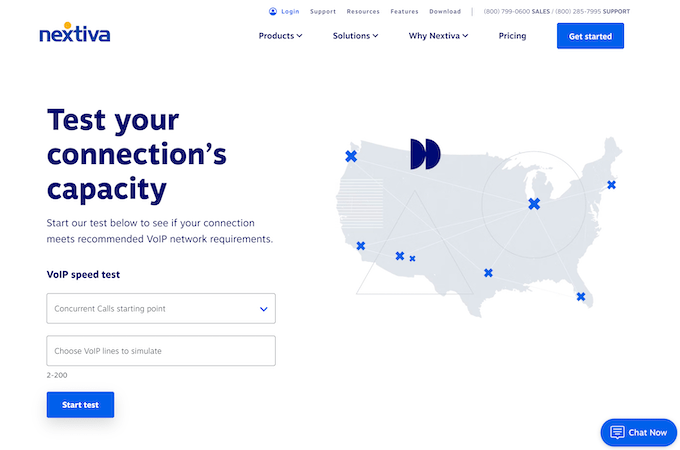
This can help you determine if your current internet connection can support the VoIP calling capabilities that you’ll need on a daily basis.
2. Costs
VoIP phone systems are significantly less expensive than PBX systems.
While your total costs will depend on your business size, required lines, employees, and other factors, you can almost always expect to pay more for a PBX system than a VoIP service.
A business with around 20 users can expect to pay anywhere from $5,000 to $10,000 on hardware and equipment alone. Software licensing fees are an additional $2,000 to $3,000, and you’ll typically pay around $1,500 for installation. Ongoing maintenance for your PBX phone can cost around $3,000 annually.
Business VoIP services typically start around $20 per user per month.
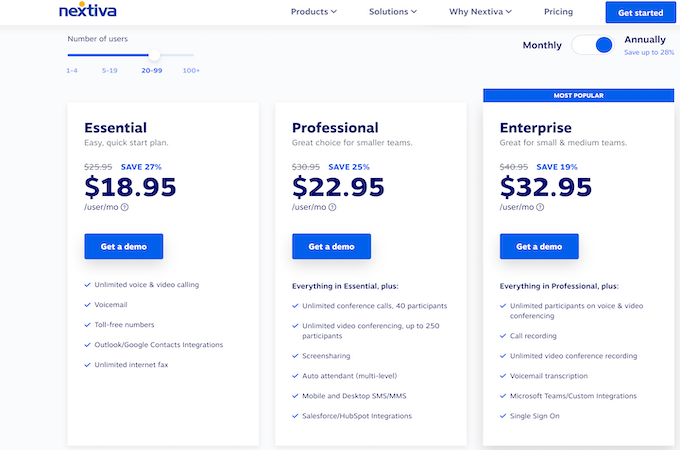
Your dollar also goes much further when you use a VoIP phone. That’s because many of the best VoIP phone providers include features that go beyond basic telephone calling.
Depending on your provider and plan, you can access features like internet faxing, SMS messaging, video calling, and more, all included with your flat monthly rate.
For smaller businesses on a limited budget, VoIP systems are a no-brainer. They also work well for larger organizations, as you typically get better per-user rates based on volume and contract length.
3. Installation and Setup
Cost aside, setting up a PBX network for your business can be complex. This is not something that most businesses will handle on their own, and it typically requires IT assistance and installation from your PBX provider.
The process involves lengthy steps for KSU wall attachments, circuit cards, and connecting your private branch to a telephone network. PBX vendors provide the cables and cords that are required for the private branch, and these act as the main line for your PBX system. All of the individual phones need to be connected to the system as well.
Deploying a PBX system for your business may include drilling some holes in your walls and running new wires through the ceilings. It’s definitely not a DIY job.
Conversely, VoIP phones are ultra-easy to set up and deploy. There’s virtually no installation process, and you likely already have many of the prerequisites handled.
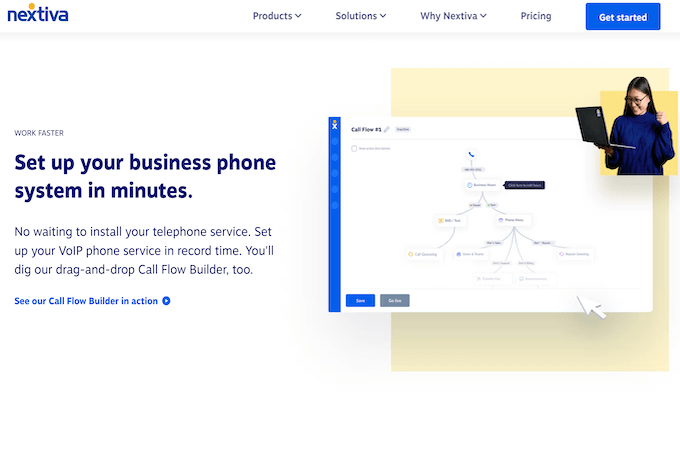
In some cases, setting up your VoIP phone system can be done on the same day. This is especially true if you don’t need any additional hardware and your calls are being made from existing laptops, smartphones, and VoIP phones.
The only thing that may need to be installed is a piece of software for each device. Beyond that, all you need to do is get your users onboarded to the system, which is not something that requires any IT assistance.
So for those of you who don’t have dedicated in-house IT support, a VoIP phone system will make your life much easier.
4. Scalability and Flexibility
Since PBX systems rely on on-premises hardware and connectivity, scaling them is not easy. For example, if your company is opening a second office in a different location, you need to build a PBX infrastructure there as well.
Even if you’re adding new devices and users at an existing location, you may need to replace certain modules with something that can handle the increased capacity.
Scaling your VoIP system is much easier. Whether you’re adding new employees to one location, opening completely new locations, or wanting to onboard remote staff, scalability is achieved with just one or two clicks.
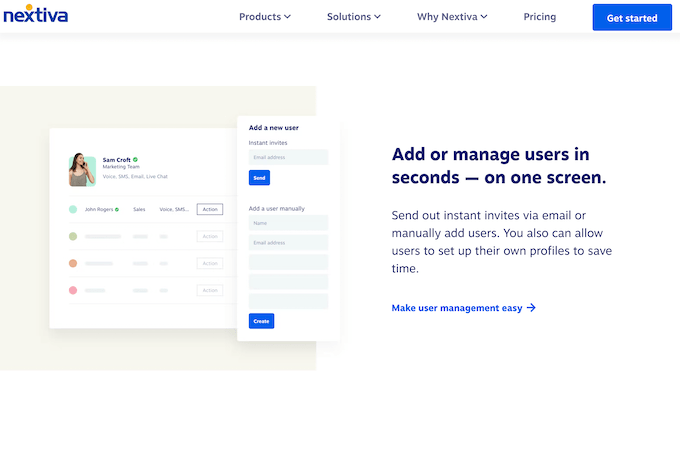
You can manage all of your users, phones, lines, extensions, and features from a simple admin portal. You won’t have to send a technician out to an employee’s home if you want to add a new remote user. Everything is handled from the cloud.
You can only go so far with a PBX. The ability to add more features is much more limited compared to a VoIP system.
VoIP phone providers typically don’t lock you into strict contracts either. So if you want to upgrade your plan to support new features or new users, you can do so without having to jump through hoops. The only thing that might change is your monthly subscription rate.
PBX systems typically tie users to specific desk phones. An employee couldn’t take calls on the road or answer calls from home. The calls must be made from the phone associated with their extension.
VoIP systems are highly flexible—allowing users to make and receive calls from virtually anywhere. Someone could start a call on their computer at work, then transfer it to the mobile app while they’re leaving the office, and transfer it again to a laptop when they get home.
5. Hardware Requirements
VoIP phone systems have minimal hardware requirements.
You really only need to have internet access and a router. Beyond that, calls can be made using existing smartphones and computers. You don’t have to purchase any actual phones to use a VoIP system.
However, you do have the option to use traditional-style phones with a VoIP subscription. You just need to make sure the phones are VoIP-enabled, so it’s best to get them directly from your VoIP provider.
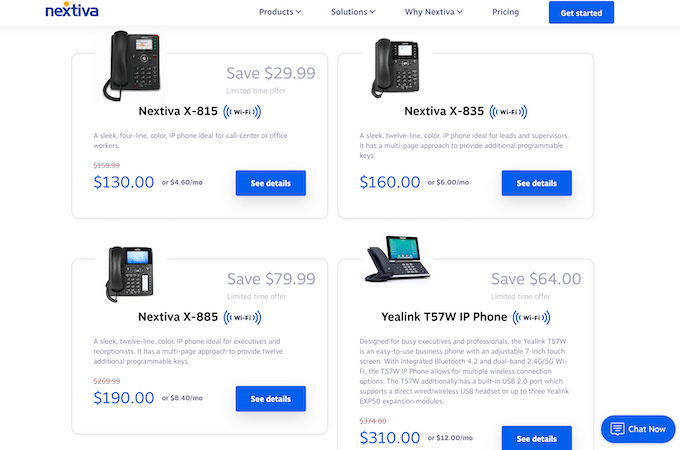
You can also get VoIP cordless phones, conference calling phones, headsets, and more. There are even VoIP adapters that transform traditional analog phones into VoIP phones. This will help keep your costs low if you don’t want to purchase more hardware.
PBX hardware is more involved.
You need to get desk phones, cables, splitters, modems, circuits, and wall jacks. These systems also require on-site PBX servers; most businesses need backup power sources.
6. Advanced Features
PBX phones don’t really come with any advanced features. A PBX is a phone system that comes with everything you’d expect in a high-quality business phone system, but it ends there.
VoIP systems take basic business calling to the next level. Depending on the provider and plan you select, your VoIP phone system is included with an entire business communication suite.
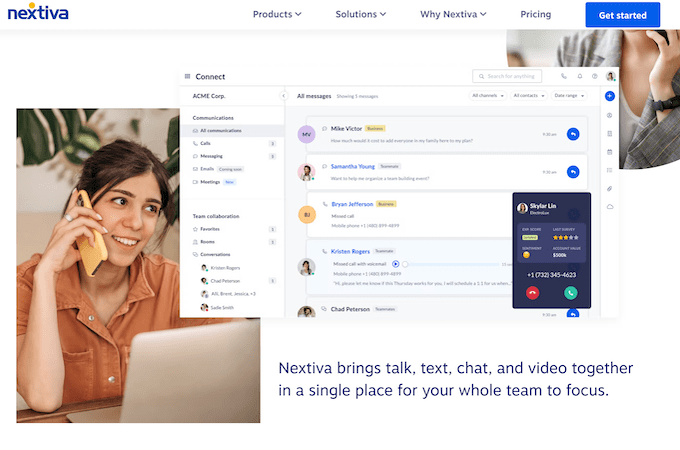
Some examples of advanced VoIP features beyond call capabilities include:
- Unified communications
- Video calling and conference calling
- Team chat
- Helpdesk software
- Sales CRMs
- Screen sharing
- File sharing
- Call analytics and live data
- Automated workflows
- Customer journey management
- Third-party software integrations
You won’t find these in a PBX solution.
7. International Calling
PBX phones typically charge high rates for international calls. But with a VoIP phone system, you can make international calls for just a few cents per minute.
These rates vary by location, but they’re often extremely flexible. This means that you won’t necessarily have to get an international calling plan that’s separate from your monthly subscription. Any international calls will just be added to your bill.
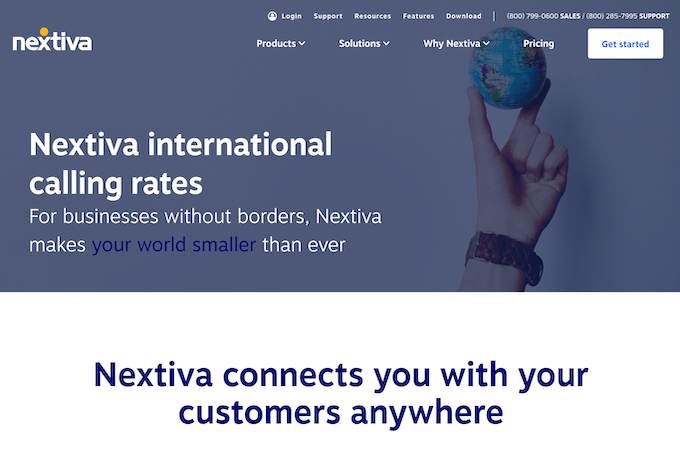
For businesses with global branches, VoIP phone systems make it possible to communicate with users on the same network at no additional cost. For example, your New York office can communicate with your London team if the calls are made directly through the same VoIP platform.
The Similarities Between PBX and VoIP
While PBX and VoIP phone systems have several differences, the two also share some common ground.
First and foremost, these are the two top options to consider for business phones. Both VoIP and PBX systems have options for basic local calls and domestic calling. You’ll have the ability to keep your existing phone number, add new phone numbers, and set up custom extensions and new lines for your staff.
Both systems come with basic business phone features. This includes voicemail, call holding, call transfers, overhead paging, conference calling, and more.
It’s also worth noting that both PBX and VoIP phones are both highly secure. There’s sometimes a misconception that VoIP systems can have security problems because it uses the internet for calling. But this is a non-issue if you’re using a reputable VoIP phone service.
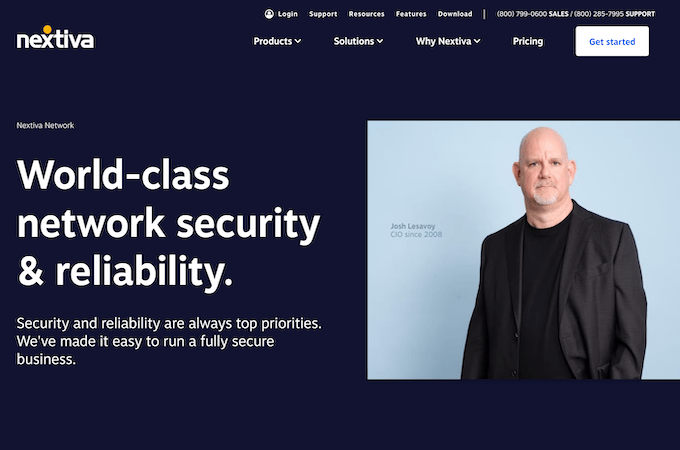
For example, Nextiva offers 24/7 monitoring, call encryption, and biometric checkpoints to access their servers. The network also has HIPAA-compliant and PCI-compliant solutions, meaning businesses in every industry can rely on Nextiva for security.
Final Thoughts About PBX vs. VoIP
PBX and VoIP phone systems are very different. PBX solutions are better for businesses in rural locations that can’t rely on internet connectivity for calls. They also work well for organizations with on-site IT teams and offices that won’t be scaling beyond a single location.
VoIP phone systems are much more cost-effective than PBX phones. They’re easy to use, highly flexible, mobile, and can be deployed anywhere. A VoIP system will be much easier for you to scale and maintain if your business has multiple offices or remote workers.
Another standout of using a VoIP phone system is that you can often get an entire suite of communication tools with your subscription. This includes video calling capabilities, team chat, collaboration features, SMS messaging, and so much more.
https://www.quicksprout.com/pbx-vs-voip/
No comments:
Post a Comment